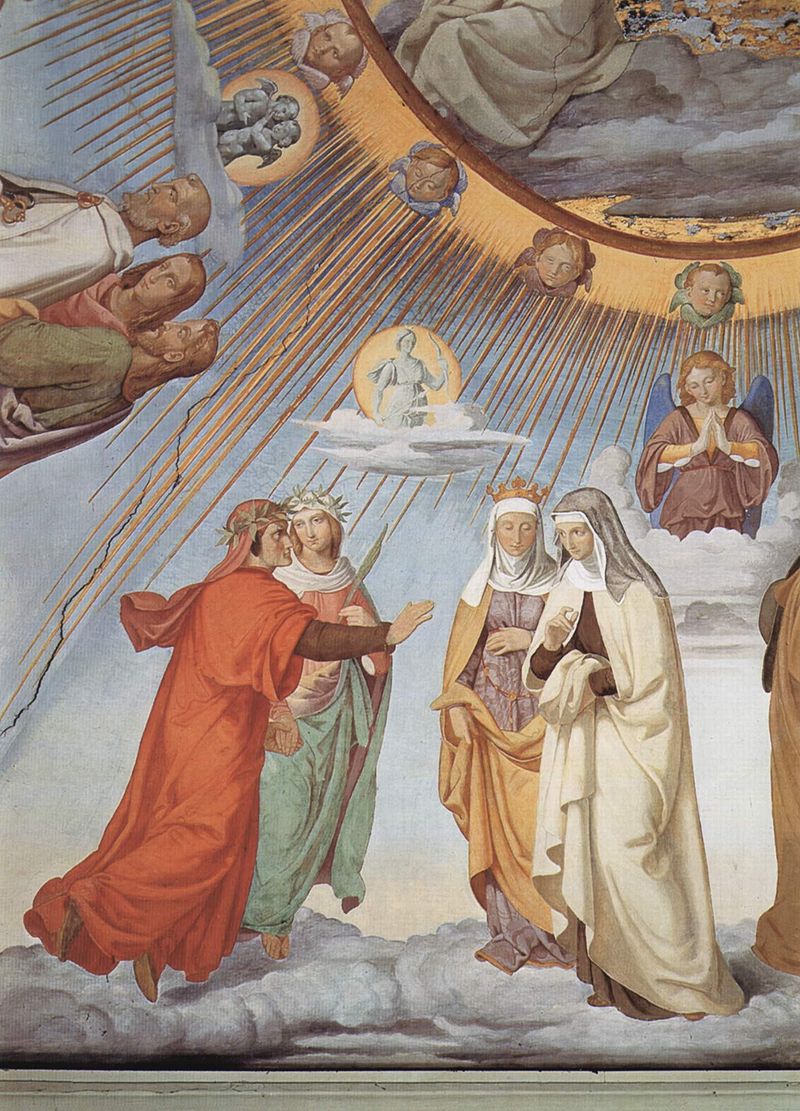After an initial ascension, Beatrice guides Dante through the nine celestial spheres of Heaven. These are concentric and spherical, as in Aristotelian and Ptolemaic cosmology. While the structures of the Inferno and Purgatorio were based on different classifications of sin, the structure of the Paradiso is based on the four cardinal virtues and the three theological virtues.
The first seven spheres of Heaven deal solely with the cardinal virtues of Prudence, Fortitude, Justice and Temperance. The first three describe a deficiency of one of the cardinal virtues – the Moon, containing the inconstant, whose vows to God waned as the moon and thus lack fortitude; Mercury, containing the ambitious, who were virtuous for glory and thus lacked justice; and Venus, containing the lovers, whose love was directed towards another than God and thus lacked Temperance. The final four incidentally are positive examples of the cardinal virtues, all led on by the Sun, containing the prudent, whose wisdom lighted the way for the other virtues, to which the others are bound (constituting a category on its own). Mars contains the men of fortitude who died in the cause of Christianity; Jupiter contains the kings of Justice; and Saturn contains the temperate, the monks who abided by the contemplative lifestyle. The seven subdivided into three are raised further by two more categories: the eighth sphere of the fixed stars that contain those who achieved the theological virtues of faith, hope and love, and represent the Church Triumphant – the total perfection of humanity, cleansed of all the sins and carrying all the virtues of heaven; and the ninth circle, or Primum Mobile (corresponding to the Geocentricism of Medieval astronomy), which contains the angels, creatures never poisoned by original sin. Topping them all is the Empyrean, which contains the essence of God, completing the 9-fold division to 10.
Dante meets and converses with several great saints of the Church, including Thomas Aquinas, Bonaventure, Saint Peter, and St. John. The Paradiso is consequently more theological in nature than the Inferno and the Purgatorio. However, Dante admits that the vision of heaven he receives is merely the one his human eyes permit him to see, and thus the vision of heaven found in the Cantos is Dante’s personal vision.
The Divine Comedy finishes with Dante seeing the Triune God. In a flash of understanding that he cannot express, Dante finally understands the mystery of Christ’s divinity and humanity, and his soul becomes aligned with God’s love:[24]
But already my desire and my will
were being turned like a wheel, all at one speed,
by the Love which moves the sun and the other stars.[25]

